How do we best encourage a student’s sense of wonder and curiosity?
In the last blog, I wrote about how it is our job as teachers to help students develop their sense of wonder and curiosity. Simply put, science is the study of the natural world around us. Clearly, science and nature go hand in hand! I find that the best place to encourage students’ sense of wonder is to go outside! There are so many science standards that can be covered while doing this. Outdoors is the perfect place to discuss whether or not objects are natural or manmade. Students can observe plants and animals and discuss what they need to survive. They can compare the diversity of mini habitats like puddles and rotting logs! Likewise, children can describe and classify the observable properties of objects. The list is practically endless!
How can I encourage a sense of wonder in the primary grades?
Reading About Nature, Using Science Equipment, and Discussions
With the primary grades, you can start out by reading a book about going on a nature hunt or teaching students how to correctly use hand lenses. After the discussion, tell the class that they will be going outside on a nature hunt. They will be able to investigate many things using their senses. Discuss the fact that students will be using four of their five senses. With kindergarteners and first graders it is a good idea to review these before you head outdoors. They will be using their senses of sight, hearing, smell, and touch. However, students should never use their sense of taste unless directed by the teacher. Also, discuss gently handling any living things. This is true for both animals and plants. Before going outside, I create a list of natural objects they might encounter. We discuss this list.
Head Outside!
Tell students that they are going to try to find as many things on the list as they can. Likewise, there may be many other interesting natural objects that they find. Encourage them to point those out to the class. It has worked for me to partner up students for a nature walk. One student carries the hand lens and the other child carries the list on a clipboard and a pencil (be sure to carry a few extras). When the student with the magnifying glass finds something of interest and has had time to look at it, they trade the lens for the clipboard. This way, the other student has a turn to look at that object. This child gets to find the next item (or at least look at it through the hand lens first). This seems to keep them engaged and happy!
How do I change the investigation for upper elementary students?
With upper elementary students, I up the challenge a bit! Students can look for patterns in nature or fractals. A fractal is a never-ending pattern. Knowing about patterns and fractals in nature stimulates children to think about the world in a new way. It often encourages them to ask questions about what they observe. There are many YouTube videos about fractals in nature that you can show your students before you head outside. A good, simple video created by fourth-graders that you may want to show your students is:
This video can serve as an inspiration if you would like your students to create a video after they have had a chance to find some fractals themselves.
When the older students go out, tell them they are going on a scavenger hunt. The object is to find as many patterns and fractals as they can. Ask them to sketch what they see, or if you have access to iPads or cameras ask students to take pictures of what they see. Determine if the pattern they find is a fractal or not.
Encouraging a sense of wonder with fractals and math
If you want to incorporate math into your lesson introduce Benoit Mandelbrot. He is the scientist and mathematician that came up with the term Fractal. He was also one of the first people to use computer graphics based on his findings. Students can learn about the Sierpinski triangle. There is free, triangular graph paper online.
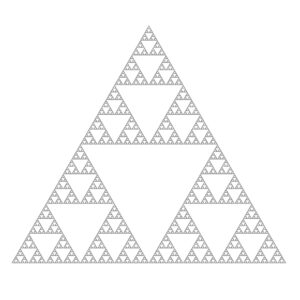
What if you can’t get your class outside?
If you can’t go on a nature walk at school, send home a list of objects that you’d like students to find with their families. I generally give them a week to complete this assignment. Encourage children to bring in special things they find to share with the class.
You can also collect things yourself and set up stations in your classroom. Place one object at each station. Assign a set of students at each station. Give them a minute or two to observe. Then ask students to go to the next station. Using a timer works well for this. If you want them to draw what they observe increase the amount of time. Young students like to observe just about anything with a hand lens. Some suggestions are twigs, leaves, tree cookies (slices of branches), rotting logs, pinecones, apples or another local fruit cut in half, feathers, snakeskin, bones, a variety of seeds, bugs in containers, pebbles, shells, and even dirt and sand.
To sum it up, doing these simple activities with your students can change the way they think about the world for years to come!
Here are some resources that can help you get started on your journey.
If you enjoy doing activities outside with your students you might also like this post about seed dispersal.
In conclusion, these are some of the materials that I would recommend you get for your classroom if you don’t already have them. These large magnifying glasses are great for little hands. Magnifying containers are great for bugs, and they can hold a small amount of water. These clipboards stand up well science labs even if they get a little wet.
**This post contains affiliate links for Amazon. By purchasing an item on Amazon using one of these links, I will receive a small commission on your purchase.**
Happy hunting,

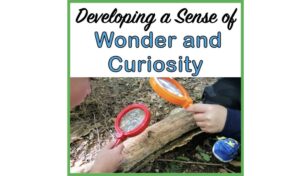
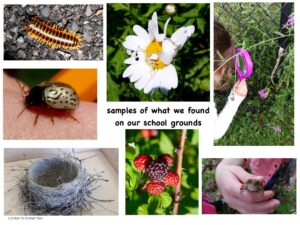
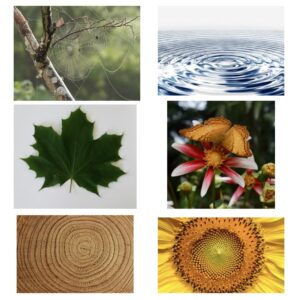
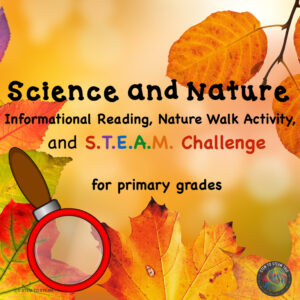
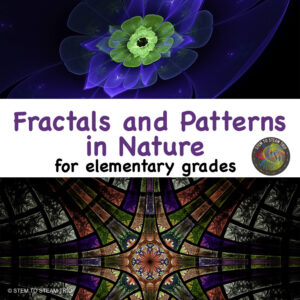





One Comment